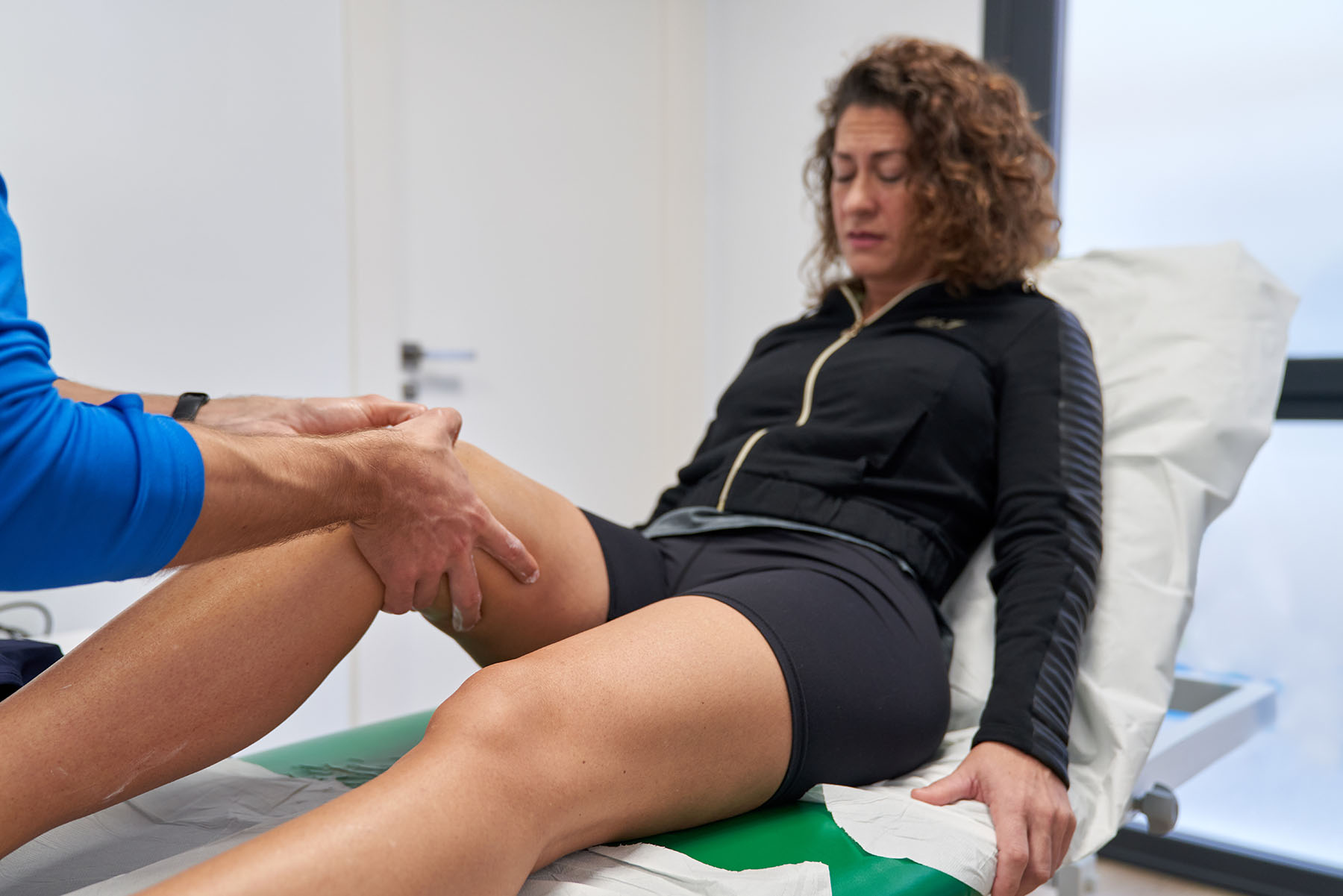Does a Meniscus Tear Always Need Surgery?

There is a time and a place for popping sounds. A champagne cork bursting out from a bottle of bubbly signifies good times, but no one – young or old – wants to hear a pop coming from their knee. When that happens, it could mean a torn meniscus, a common knee injury.
What exactly is the meniscus?
The meniscus is a C-shaped section of cartilage inside each knee. It acts like a shock absorber, cushioning the space between your shinbone and thighbone.
How does a meniscus tear happen?
The meniscus can tear if you suddenly, forcefully pivot or rotate your knee while it bears your full weight. Some athletes, some professions, and certain individuals are more prone to these tears, says Michael G. Baraga, MD, FAOA. Dr. Baraga is an orthopedic surgeon specializing in sports medicine at the University of Miami Sports Medicine Institute.
“Athletes who do loaded deep knee bending and who pop up from squats have a higher propensity for these injuries, as do those performing heavy labor. In older patients, a loss of elasticity makes the meniscus more prone to tears; it can be linked to arthritis, too,” Dr. Baraga says. Sports more likely to cause these injuries include football, basketball, and tennis. Heavy lifting may also damage the meniscus.
What does a meniscus tear feel like?
Most people know when something isn’t quite right with their knee, even if they don’t realize it until a day or two after the injury. Beyond the telltale pop (which doesn’t happen in all injuries), Dr. Baraga says an acute or sudden injury causes pain, stiffness, swelling, instability, and/or difficulty walking. Your knee may catch, or you may not be able to straighten out your leg fully. If you experience these symptoms, “see a doctor soon,” Dr. Baraga says.
When the discomfort worsens over time, as often happens in older adults, arthritis may be to blame. If your symptoms of a meniscus tear linger for more than a few months, see a doctor.
What are my treatment options?
It’s important to see a physician who specializes in orthopedic injuries. Most orthopedists will order an X-ray first to rule out any other problems, followed by an MRI.
“Imaging helps with diagnosis, but you also have to examine and talk to the patient,” Dr. Baraga says. He debunks the common misconception that seeing a surgeon always results in surgical treatment. “Traditionally, orthopedists treated meniscus tears with surgery, but certain subsets of patients don’t always require surgery.”
So, how do you treat meniscus tears?
Unless the injury is severe, most orthopedists try conservative methods first:
- RICE method: rest, ice, compression such as a knee brace, and elevation
- Over-the-counter or prescription non-steroidal anti-inflammatory pain relievers like Ibuprofen or Motrin
- Physical therapy exercises to strengthen and stabilize the knee
- Steroid injections to relieve swelling and inflammation
Some patients also get relief from acupuncture, massage, and an anti-inflammatory diet.
“Some studies say that biologic injections (such as platelet-rich plasma or PRP) could help manage pain. Biologics are similar to steroid injections without the side effects. It’s important to note that biologic injections are used for pain control versus healing,” Dr. Baraga says.
Used in combination, these methods may sufficiently heal your injury and relieve pain, but it takes time and patience.
For a serious tear or one that doesn’t respond to regular treatments, Dr. Baraga may advise surgical repair.
“In some cases, the meniscus tears and flips over to the front of the knee. Surgery is needed to unblock the knee and evaluate the tear.”
He repairs most tears arthroscopically, a less invasive method than traditional large incision surgery. An arthroscope is a small surgical tool with a light and small camera. The camera projects an image from inside the knee onto a monitor, which helps the surgeon diagnose and treat the injury. If damage is found, the surgeon inserts a surgical instrument through additional small incisions to repair the tear or, in some cases, remove the torn piece of meniscus.
“Acute injuries tend to be amenable to repair,” Dr. Baraga says.
After surgery, the patient will still need RICE and physical therapy while they can get back to their desired activities.
When thinking about meniscus tears, there are two key points to remember.
“Not every tear requires surgery, and prompt evaluation is key. At least get it checked out versus letting it go for three months,” Dr. Baraga says.
Nancy Moreland is a regular contributor to the UHealth Collective. She has written for several major health care systems and the CDC. Her writing also appears in the Chicago Tribune and U.S. News & World Report.
To schedule an appointment with one of the experts at the University of Miami Sports Medicine Institute, call 305-689-5555, option 2, or click here.
Tags: act as shock absorbers, Dr. Michael Baraga, meniscal tear, reducing pain
